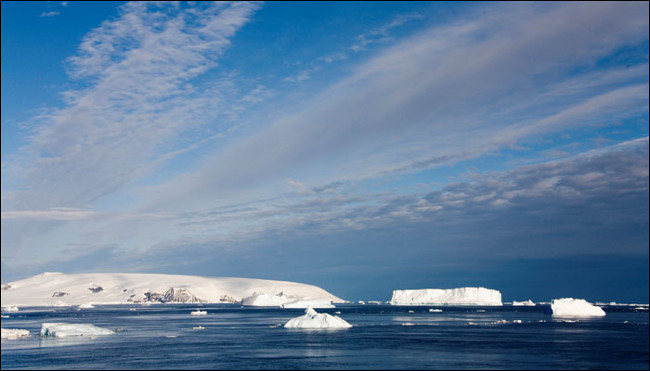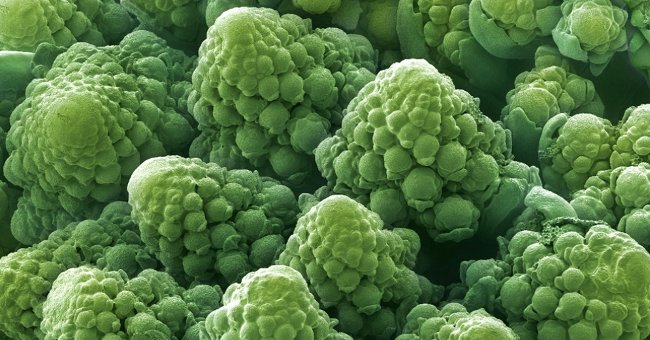Is the Antarctic once covered by lush subtropical forests?
Scientists have discovered that the Antarctic, coldest, coldest region in the world was once covered by subtropical forests about 300 million years ago.
According to Marcelo Leppe, a biologist working at the Chilean National Institute of Antarctica, told the EFE website: "Most scientists agree that the Antarctic was covered by a green color, but the thesis This is still not widely known " . It is known that Leppe, Chile's representative to work with the International Science Commission on Antarctic research, has spent his life searching for fossils and clues to the flora and fauna of ' Continent White '.

Leppe said that "the forest began to appear in Antarctica about 298 million years ago during the Permian geological period, when the glaciers drifted and the global climate entered a warming phase ."
Evidence is that the Jurassic fossils show the existence of poplar, coniferous trees and this is also where the Cryolophosaurus dinosaurs have grown most strongly in the past. However, the brightest golden age of Antarctica is the Cretaceous period, starting from 145 to 66 million years ago.
Leppe said, "About 80 million years ago, walking in Antarctica was like walking in a tropical or subtropical forest, like what we could see in South, Central Chile or New Zealand. nowadays."
Besides, biologists said: "We know that some dinosaurs have migrated before the winter comes to survive, and then the plant flora already exists during that icy season at How Antarctica is, it is still a mystery, although trees receive 22 hours of light every day in the summer in Antarctica, but this does not mean that they have enough photosynthetic energy to live pulling. long through the winter ' - He said.
There is also a view that the green forest disappeared about 15 million years ago, leaving a harsh ice desert. And another miracle has just been discovered recently, showing that there are many species of wild grass and oatmeal flowers growing back in Antarctica mainly in melting glaciers due to global warming. Climate change, global warming, invasion of wild plants promising to bring Antarctica, a white continent back to a green continent as in the past.
You should read it
- Scientists discover what's left of the oldest Antarctic creature
- There are signs of ecological change due to climate change in the arid valley of Antarctica
- Interesting finding: Forest trees have thicker shells where fire often occurs
- China announced the digital map of Antarctic seabed 3D
- Discover new giant carnivorous dinosaurs, causing headaches for archaeologists
- Will disaster happen when the leaves in Chernobyl area do not decompose?
- Scientists use AI to predict large-scale wildfires
- Acid in the Arctic Ocean increases rapidly with climate change
May be interested
- Science created a shocking red-eye mutant bee
 if one day you suddenly see the red-eyed bees, especially in the southern california region, don't be too surprised, panicked, they are just sudden bees that university scientists california, riverside created.
if one day you suddenly see the red-eyed bees, especially in the southern california region, don't be too surprised, panicked, they are just sudden bees that university scientists california, riverside created. - White polar bears die because of love loss that many people suffer
 szenja, a 21-year-old polar white bear at seaworld marine park in san diego (usa), was shocked and died after only a few weeks when her companion was a snowflake male.
szenja, a 21-year-old polar white bear at seaworld marine park in san diego (usa), was shocked and died after only a few weeks when her companion was a snowflake male. - Strangely: The beaver becomes the 'leader', leading 150 cows
 a beaver inadvertently strayed into a cattle farm in saskatchewan, canada where the herd of 150 cows was, the unexpected happened, instead of chasing the stranger away from the territory, the herd was obedient. follow the small beaver's tail.
a beaver inadvertently strayed into a cattle farm in saskatchewan, canada where the herd of 150 cows was, the unexpected happened, instead of chasing the stranger away from the territory, the herd was obedient. follow the small beaver's tail. - Super beautiful photos of everyday food are viewed through a microscope
 please join tipsmake.com to observe a bunch of super beautiful photos on daily food that are viewed through the microscope below!
please join tipsmake.com to observe a bunch of super beautiful photos on daily food that are viewed through the microscope below! - The extremely intense battle of two 5-ton male elephants
 huge african elephants are ready to fight together to gain the right to mate with their children.
huge african elephants are ready to fight together to gain the right to mate with their children. - Listed 10 largest species of creatures in the ocean
 not a blue whale, a lion's mane, is the creature with the largest body length in the ocean. when stretching tentacles, lion mane jellyfish can reach a length of about 36.5 m.
not a blue whale, a lion's mane, is the creature with the largest body length in the ocean. when stretching tentacles, lion mane jellyfish can reach a length of about 36.5 m.






 Configure Sons of the Forests on PC
Configure Sons of the Forests on PC Why are the Antarctic glaciers in France interested in by scientists?
Why are the Antarctic glaciers in France interested in by scientists? How to find binoculars in Sons of the Forests
How to find binoculars in Sons of the Forests Scientists discover what's left of the oldest Antarctic creature
Scientists discover what's left of the oldest Antarctic creature Hot winds are weakening Antarctic ice sheets
Hot winds are weakening Antarctic ice sheets